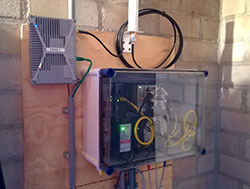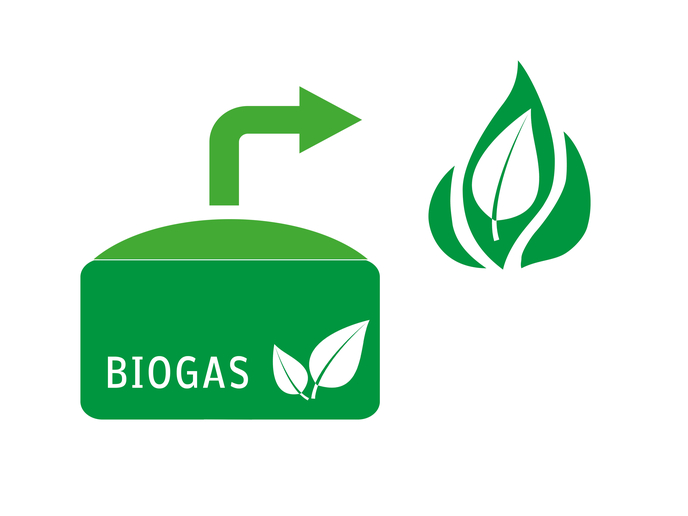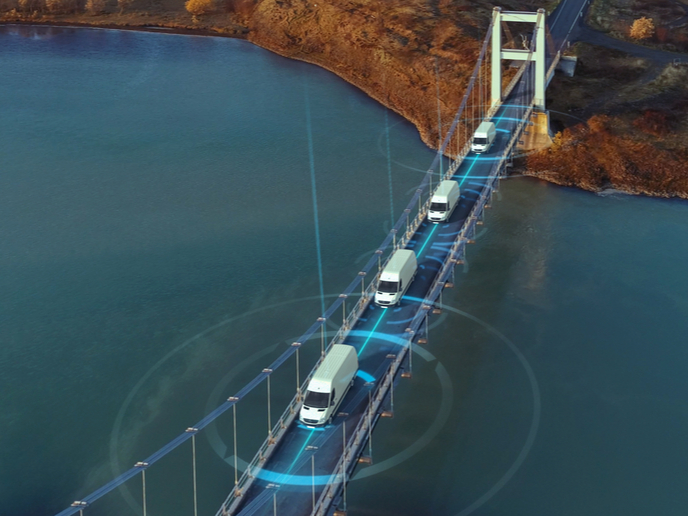A cyber-secure communication platform for smart energy grid applications
Smart grids are typically defined by the multitude of applications, actors and communicating devices they bring together, along with their limited use of human intervention. Different, isolated software is used for the likes of metering, monitoring and fault detection, which inevitably results in unnecessary burden when it comes to configuring and managing the energy grid. C-DAX technology solves this problem by building upon the concept of information-centric networking (ICN). This concept enables smart grid applications – for example electric vehicle charging, smart metering or grid monitoring – to exchange information in a secure, scalable, flexible and reliable manner. To achieve this, C-DAX developed a cloud-based middleware that uses a topic-based publish-subscribe engine: While today’s grids use individual silos to manage separate types of demands for electricity, the C-DAX approach virtualises these silos into topics which can be reconfigured and adapted based on current demand and constraints. To avoid security issues, the system decouples communicating end hosts. This simplifies the configuration of the system and provides inherent security protection to obscured target hosts. ‘We support different communication modes (broker-based, query-based, point-to-point communication) and we use the adapter concept to encapsulate existing smart grid protocols. This makes our solution stand out when compared to other ICN-based communication systems currently used on the Internet, especially with respect to the integrated security functions,’ says Dr Matthias Strobbe, coordinator of C-DAX and project manager at iMinds. ‘Additionally, the C-DAX platform can support applications with diverse requirements, ranging from retail energy transactions between large numbers of different actors to real-time grid monitoring applications.’ In addition to state-of-the-art security functionalities that grant only the strict minimal trust to intermediary communication nodes, the C-DAX architecture allows energy distribution system operators (DSOs) to personalise their security parameters to the requirements of the deployed application. ‘Aspects for each application can be selected, like the used cryptography function or key distribution mechanisms. For instance, latency-sensitive applications like Real-Time State Estimation of distribution grids (RTSE) can use fast symmetric cryptography, while smart metering can select stronger asymmetric cryptography for privacy-sensitive applications,’ says Dr Strobbe. Real-time state estimation One C-DAX application that particularly stands out is the RTSE of distribution grids using Phasor Measurements Units (PMUs). Concretely, this application provides operators with a perfect view of the status of their grids at any time. It supports all kinds of applications, from voltage control to congestion management, optimal dispatching of distributed energy resources (DERs) and fault location. ‘We performed one major field trial on the distribution grid of Alliander (Dutch DSO), near Arnhem in the Netherlands, to demonstrate that the combination of the C-DAX platform and RTSE application can help operators to better manage their grids,’ Dr Strobbe explains. Ten PMU devices were deployed along with a power quality meter, and Vodafone’s local LTE network was used as the underlying telecom infrastructure – a first for the exploitation of PMU data for RTSE. ‘The results show that a real-time view of a distribution grid can be achieved via a public, wireless LTE network, that the added latency from C-DAX is negligible, and that the C-DAX resilience mechanism was both fast and reliable in the face of node and link failures,’ says Dr Strobbe. The use of PMU technology also showed higher refresh rates and lower measurement latencies compared to standard monitoring devices. Whilst the project was completed in February 2016, project partners have remained active. Alliander and National Instruments are drafting plans to assess the potential of C-DAX for different uses and are planning to develop its code base. EPFL, the main developer of the RTSE application, is also exploring the possibility of creating a spin-off company to commercialise the project’s PMU-based monitoring infrastructure. ‘We strongly believe that the combination of PMUs with RTSE can constitute the backbone of future smart grids,’ Dr Strobbe concludes.
Keywords
C-DAX, cyber security, communication platform, applications, cloud, ICN, smart grid, middleware, RTSE, LTE







